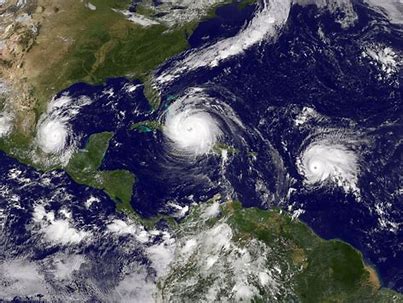Busy Hurricane Season Predicted for 2018
A study by the Colorado State University Tropical Meteorology Project predicts another busy hurricane season for 2018 with 14 named storms, seven hurricanes and three major hurricanes expected. Although less active than last year, the number of storms is slightly higher than the 30-year average of 12 named storms, six hurricanes and two major hurricanes.
Forecasters are wary to sound the alarm. They point to Hurricane Andrew, a category 5 hurricane that devastated South Florida in 1992. That year recorded only six named storms and one sub-tropical storm. In contrast, 2010 was a highly active year with 19 named storms and 12 hurricanes in the Atlantic. Just one tropical storm made landfall in the U.S. that season. Read the full story here.
According to NOAA’s Hurricane Research Division, “The U.S. averages one to two hurricane landfalls each season.” Last year, three category 4 hurricanes made landfall in the U.S. in Houston, South Florida and Puerto Rico. Damage from these storms is still impacting those regions, even as we close in on the 2018 hurricane season.
Coastal communities along the Gulf Coast and Atlantic seaboard would be wise to take precautions. A new study puts more than 40 million people living within areas at risk to floods. (Read our recent blog for more on that study.)
Hope for the Best, Prepare for the Worst
Long before a storm hits, building owners should contact the local emergency management agency to find out if any active flood warning systems are in place. The National Weather Service river-forecast centers prepare river-flood predictions and disseminate them to the public through NWS offices. Note these forecasts do not include many non-residential buildings near smaller streams. Property owners in those areas should work with local and state agencies to develop an adequate forecasting system.
Building owners who have taken steps to mitigate potential flood damage with dry floodproofing systems such as floodgates, floodpanels and flood doors should develop detailed flood emergency operational plans. Plans should include information on how floodproofing measures work during and after a flood event. For example, equipment that requires electricity, such as a sump pump, needs power throughout a flood event.
The plan should establish a chain of command, delineate personnel notification procedures, assign specific duties, describe locations for floodproofing measures, detail install and repair procedures, and include evacuation instructions. It should also include a periodic drill and training program, and a schedule for regular evaluation and updates. Owners should also schedule inspection and maintenance for all flood protected enclosures.
As the 2018 hurricane season approaches, no one knows for sure what impacts this year’s storms will have on the U.S. coasts. For those potentially in harm’s way, it’s best to heed the saying, “Hope for the best, prepare for the worst.”


